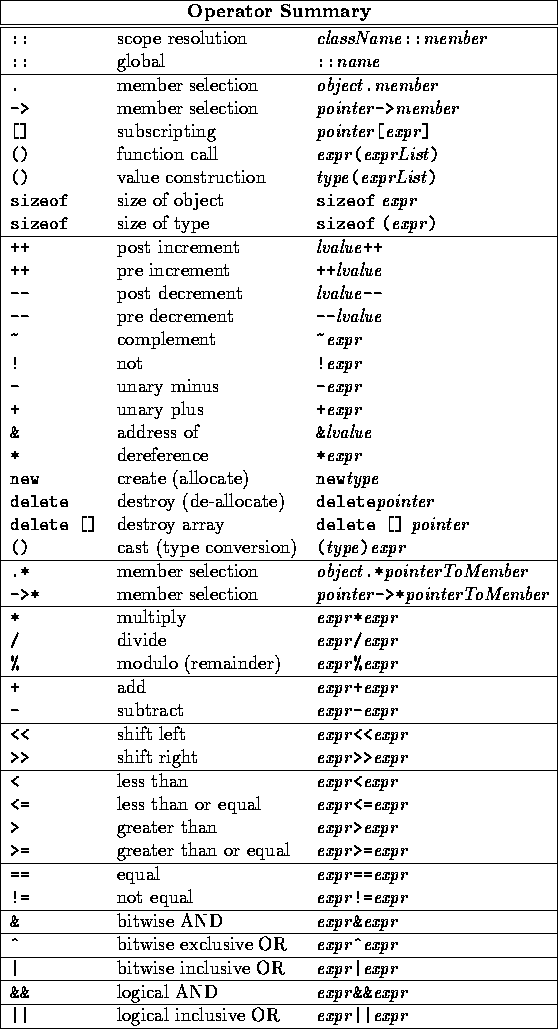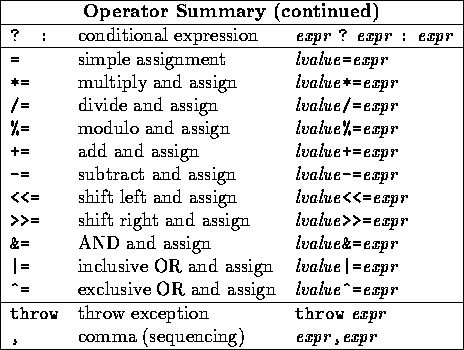
Tom Kelliher, CS17
Feb. 26, 1996
Classified by the number of operands
+, -, ++, --, ...
minus_i = -i;
Trivia: -1.2
+, -, *, /, %
Note:
int number = 456; int digit0; int digit1; int digit2; digit0 = number % 10; number = number / 10; digit1 = number % 10; number = number / 10; digit2 = number % 10;Can we use this to get binary?
Can we get the 100's digit without going through the 1's and 10's digits?
Any statement, or part of a statement, with operators:
i = i + 10; // 2 operators
j++;
k += 10;
while (i <= 10) ;
The entire C++ precedence table:


Unary and assignment operators right associate; all others left associate
Precedence, associativity table for the operators we've seen so far:
Assignment operator:
i = j = 1000;
Examples:
int i = 0; int j = 0; cout << setw(5) << ++i << j++ << endl; cout << setw(5) << i << j << endl;
A ``side effect:''
int i; int j = 10; i = ++j - 6; // not good programming practice
Something to definitely avoid:
int i = 0; i = i++ + ++i;
Analogous to increment
Shortcuts for this common situation:
i = i + 10; j = j * k; l = l / (m * 2);
Corresponding compound assignments:
i += 10; j *= k; l /= m * 2;
Why four ways of adding 1 to a variable?
The compound assignments:
+= -= *= /= %=
Modified precedence, associativity table for the operators we've seen so far:
Evaluate the following expressions:
int a = 4; int b = 5; int c = 2; int x = 10; int y = 3; int z = 5; a % b - 5; // these look funny, but they're valid c - b * a; c * c + b * a / 3; a - b - c * a % b; x % y * z; x++ % --y + 7 / z; ((x - 6) * (x - 6) + y * y) / (z * z); x += y + z;